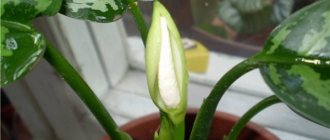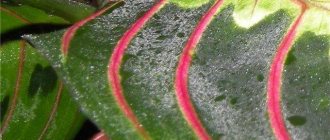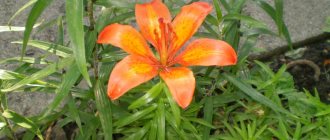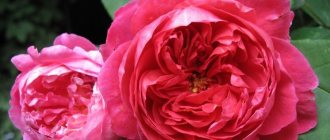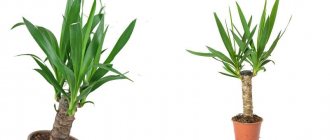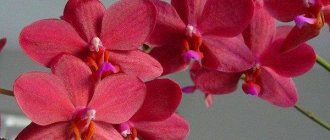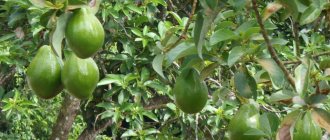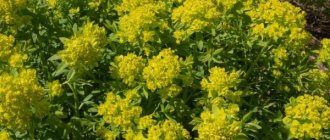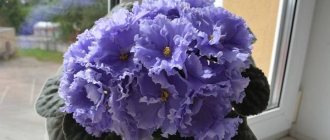Origin
Under natural growing conditions, curly lily can be found in hornbeam, oak and deciduous forests of the European part of the mainland. The heat-loving plant has so much vital energy that it was able to adapt to the cold climate and settled in mountainous areas and glacial valleys. The distribution area became wider and wider every year. Now the curly lily is widespread in Siberia, the Far East, and Transbaikalia.
Homeland of saranka
Name
European breeders paid attention to the curly lily back in the 18th century. At that time, it was considered a divine flower and was grown only in greenhouses and artificial gardens. Thanks to modern breeding work, several varieties and hybrid varieties of the plant have been developed.
People call the curly lily the saranka, and scientists gave it a sonorous name - “Martagon”, which translated means “Lily that gave birth to Mars”. The Latin name is Lílium mártagon.
Other names for lilies are also known: royal curls, ringing forest bell, golden root, forest lily.
Saranka (photo of flowers)
Curly lily or saranka is a perennial plant with beautiful flowers that exude a sweetish aroma. Thanks to its medicinal properties, the population began to decline noticeably, so the plant was listed in the Red Book.
Saranka
Lily has a special place in history. Her image was used to decorate the emblems and heraldry of knightly orders. Studying Scandinavian mythology, you can find out that the saranka served as a cradle for the Elves and they could not part with it for a minute. Medieval alchemists considered the lily to be a miraculous and magical flower; they firmly believed that if warriors tasted the plant’s bulb, they would become invincible.
Description
The curly lily is popularly called saranka, masala, royal curls, and forest lily. The flower is a perennial plant whose height reaches 1.5 meters. The stem has a round shape and has red spots on it. Saranka flowers grow from bulbs formed by fleshy, yellow, scale-shaped leaves. Their diameter can reach 8 centimeters.
The lower part of the stem is covered with oblong median leaves, collected in whorls of several pieces. Up the stem they have a regular arrangement. The leaves are 15 centimeters long and 5 centimeters wide and have smooth edges. Drooping inflorescences have the shape of a turban. Petals with spots on them are colored in orange, violet, purple shades. They are bent back, starting from the base. The fruit has the shape of a hexagonal box. Flat seeds with films around the edges are triangular. Their color is brown, with different shades. The flowering period begins at the end of June and lasts several weeks. Growing in a sunny area, the plant produces up to 20 flowers. Curly lily is a frost-resistant plant. It is successfully cultivated in the harsh climate of Siberia.
- 37 facts about cheetahs
- Scolopendra
- 32 facts about tigers
- Weasel
- Whale shark
- 34 facts about raccoons
Favorite varieties of martagon lilies
The unique quality of these lilies is that they are both showy and graceful. Of the natural forms, the most beautiful, in my opinion, are white without specks on the petals (var. album) and Cattani, also Dalmatian (var. cattaniae, var. dalmaticum), with dark red flowers.
Hybrids of various natural and garden forms with other types of lilies - Tsingaut, Hanson, honey-shaped - have produced varieties that are stunning in diversity and beauty. In total, about two hundred of them are registered. Black Prince has the darkest, purest red flowers (height 1.1 m); the variety reproduces extremely slowly.
Lily Martagon Early Bird
Early Bird (1.7 m) with very fragrant flowers, on the contrary, is characterized by relatively fast growth and produces daughter bulbs well. The flowers open bright orange-pink, then turn fawn.
Tsingense (1.5 m) has a characteristic tufted flower shape in a cheerful orange tone. One of my favorites, Ivorine (1.2 m), is the epitome of nobility. White flowers with a light grayish-pink shadow look like porcelain pagodas, the petals have a very dense texture. Terrace City (1.5 m) has yellow flowers, while Bronze Medallion (1.6 m) has bright bronze flowers in large inflorescences.
The color of the flowers of the Attiwaw variety (1 m) contains several shades of pink and gold. Pink Attraction is also relatively low (1.2 m). This variety has numerous large flowers of rich pink color with expressive dark red specks.
Lily Martagon Sunny Morning
Landing rules
When you decide to plant Saranka lily, you can buy seeds or a ready-made plant. It is better to plant it immediately in a permanent place; the flower does not really like transplantation and can take a long time to get used to. A slightly shaded place for planting is suitable, preferably with a sliding shadow, near bushes. The soil should be loose, never acidic, with good drainage. if the soil is sandy and prone to drying out, then it is worth adding clay soil. If the soil is heavy, it can be diluted with peat, compost, and humus. This improves the air supply to the roots and creates comfortable conditions.
Lily seeds are triangular, flat, light brown. They ripen in early August. They are sown to a depth of about 2 cm in the winter or in early spring, as soon as it thaws. If planting in autumn, it is better to mulch the soil with humus to a layer of 10–15 cm. In spring, it is necessary to prepare the seeds for planting. In about 60 days, the seeds are placed in a moist substrate (moss, sand or peat) and kept at a temperature of about 0°. The type of germination of the Saranka lily is underground, and this system allows the formation of a bulb with roots. When planting such a bulb, you should be patient. In the best case, a leaf will grow at the end of summer, but its germination may take until next year. Then a stem and several leaves are formed - a whorl. Flowers appear after another year or two. And then the Saranka lily annually pleases with bright, unusual flowers.
The flower can be propagated by rooting bulb scales. Immediately after the lily has bloomed (in early August), it is carefully dug up, the outer scales are separated, and then the main bulb is planted back. “Children” are placed in a box with prepared soil, for which turf, sand and humus are mixed in a ratio of 2: 1: 1. To create a microclimate, the soil is sprinkled with peat, covered with film and placed in the shade. At the beginning of autumn, bulbs with leaves are formed, which can already be planted. It is better to cover the plantings with hay for the winter, a layer of 10–15 cm.
Reproduction
The grasshopper reproduces with the help of seeds and small bulbs, which grow on the main bulb. The seeds are also bulbs, only they grow in the axils of the leaves and after the leaves die, the bulbs spill out onto the ground and germinate the next year. In the spring, near the main flower, you can notice sprouts with a very weak root system. After only a year, only one leaf can be seen from the sprouted bulbs. At the age of three, having become a little stronger, the lily begins to produce a stem, on which, at the age of 5, an unusually beautiful flower will appear. It is not for nothing that it is called a perennial plant; the average duration of its growth is about 22 years.
Features of care
After flowering, the stem dies and must be removed. The bulb calmly endures winter in the ground. You can insulate it with sawdust or leaves, and feed it with ash in the spring.
It is important to weed in time and avoid excessive shading of lilies.
In this case, the sprouted stems stretch out and spread, the flowers are small and pale. Moderate watering is required. Avoid overwatering, as the bulbs may rot. Having established itself in place in the first year or two, the Saranka lily does not require any special care in the future, other than ordinary manipulations. And it becomes a harmonious part of country landscape design.
Pests and diseases
Lilies can be harmed by a variety of insects. The thing to be most wary of is the lily fly, which lays larvae in the buds. As a result, the flowers never open, die, or lose their shape.
Other pests are:
- Click beetles;
- Squeak beetle;
- Khrushchi;
- Onion root mite;
- Spider mite;
- Aphid;
- Thrips;
- Winter armyworm.
The use of insecticides will help fight insects: Inta-Vir, Iskra, etc. They are safe for plants and harmful to insects.
With proper planting and proper care, the Saranka lily is quite resistant to temperature changes and is little susceptible to infections. Diseases can result from prolonged hypothermia in the summer months, or from days of heavy rain. By the appearance of the stems, flowers and leaves, you can immediately notice manifestations of the disease. The lily is most susceptible to various types of rot:
- Gray mold (also called gray mold, mold fungus), scientific name botrytis;
- Soft (bacterial rot);
- Root rot.
The manifestations of the disease are similar: yellow and brown spots appear on the stems or buds, flowers and leaves dry out and fall off. When the bulb is damaged, a depressed, softened spot appears on it, and an unpleasant odor is released. If the bulb gets sick not during storage, but in the garden, then the ground part of the flower turns yellow and dies. Affected bulbs must be destroyed, and stems, leaves and flowers must also be cut and burned. To prevent these diseases, before planting, the bulbs can be disinfected - treated with Fitosporin solution. You can also treat the soil in the fall, before planting. For this purpose, special preparations are used: topsin-M, benlate, HOM, OXYCHOM.
The Saranka lily is less susceptible to other flower diseases: fusarium, spotting, rust, sclerotial rot. In these cases, the named drugs and solutions also help.
With proper care and choosing a comfortable place, the Saranka lily will delight you with bright and unusual flowers. Harmoniously combined with shrubs, it will create unique beauty in your dacha.
Beneficial features
Saranka is a honey plant. In cooking, it is used as a seasoning for meat dishes; the bulbs can be fried, boiled, baked and eaten raw. In addition, saranka is a medicinal plant; all its parts have healing properties. In April, bulbs are harvested, in June they begin to collect stems and leaves, and flowers are also harvested at this time. The cut raw materials should be laid out under a canopy, making sure that they are not exposed to sunlight. Medicines should be stored in paper bags. The bulbs are rich in vitamins and minerals, contain proteins, alkaloids, ascorbic acid, flavonoids, iron, and sugar. But the chemical composition of saran bulbs has not been fully studied.
Saranka bulb
You can prepare decoctions, infusions and tinctures from the curly lily. The juice is used to treat wounds, inflamed skin areas, and burns. Used to treat trophic ulcers.
Application in medicine
Saranka flower is used in medicine in the treatment of biliary tract, skin and gastric diseases, in gynecology, urology, dentistry, and for cardiac and vision disorders.
Infusion of lily bulbs
A small onion is infused in boiling water (whole) for a quarter of an hour. After straining, drink a tablespoon three times a day.
The infusion is recommended to improve appetite; as a sedative for anxiety and depression; pain reliever for dental pain.
Lily bulb decoction
A decoction of crushed onion helps with diseases of the biliary tract, the juice of the onion heals burns and wounds. Chop a medium onion and add a glass of water, put on fire and bring to a boil. Strain and take a tablespoon three times a day after meals.
Lily petal tincture
For the tincture, flowers are poured with vodka (proportions are selected depending on the desired yield), infused in a dark container for six weeks, then diluted with boiled water one to three. Take a tablespoon three times a day. The product helps as a pain reliever for migraines and PMS in women. If there is inflammation in the mouth, you can rinse.
Contraindications for use
- headache;
- individual intolerance to components.
Curly lily has a peculiar smell, so people prone to allergies are not recommended to use preparations based on lily.
In landscape design, the plant is more often used to decorate suburban areas than for flower beds. The perennial actively grows and conquers space, displacing other flowers, so it is recommended to use it in single plantings and plant it near fruit trees and shrubs.
Video
The effects of drugs on the human body
- painkiller;
- sedative;
- wound healing;
- regenerating skin;
- hemostatic.
In addition, saran juice is used in cosmetology - it is added to creams, face masks and lotions. The aromatic juice is used to treat inflammation of cervical cells (erosion) and stomach ulcers.
Decoction
By rubbing the skin with a milky decoction from the onion, burns, furunculosis, abscesses, skin rashes and streptoderma are thus treated. You need to boil 250 ml of milk and cook the onion in it. If you add honey and mustard flour to the prepared broth, not a trace will remain of age spots and freckles!
Forest saranka
Tincture of saran leaves and flowers
The above-ground parts of the plant are used to prepare tincture. It turns out to be an effective remedy for the treatment of cardiovascular and neurological diseases, depression.
Alcohol tincture treats hepatitis A, chronic cholecystitis, improves vision and relieves nervous tension, and is used to relieve menstrual and toothache.
To prepare, take the vegetative parts of the plant, chop them, place them in a dark glass container and fill them with vodka. You need to insist in a dark room for 42 days. Then you need to strain and dilute with water in a ratio of 1:3. Reception – 30 drops 3 times a day.
Infusion
Increases appetite, relieves nervous tension, toothache, and helps restore strength after prolonged stress. The infusion is taken for asthenia and loss of strength. To prepare the remedy, you need to take a small onion and pour boiling water so that the water only covers the onion itself. Leave for 15 minutes, strain. Dosage: 15 ml 3 times a day.



